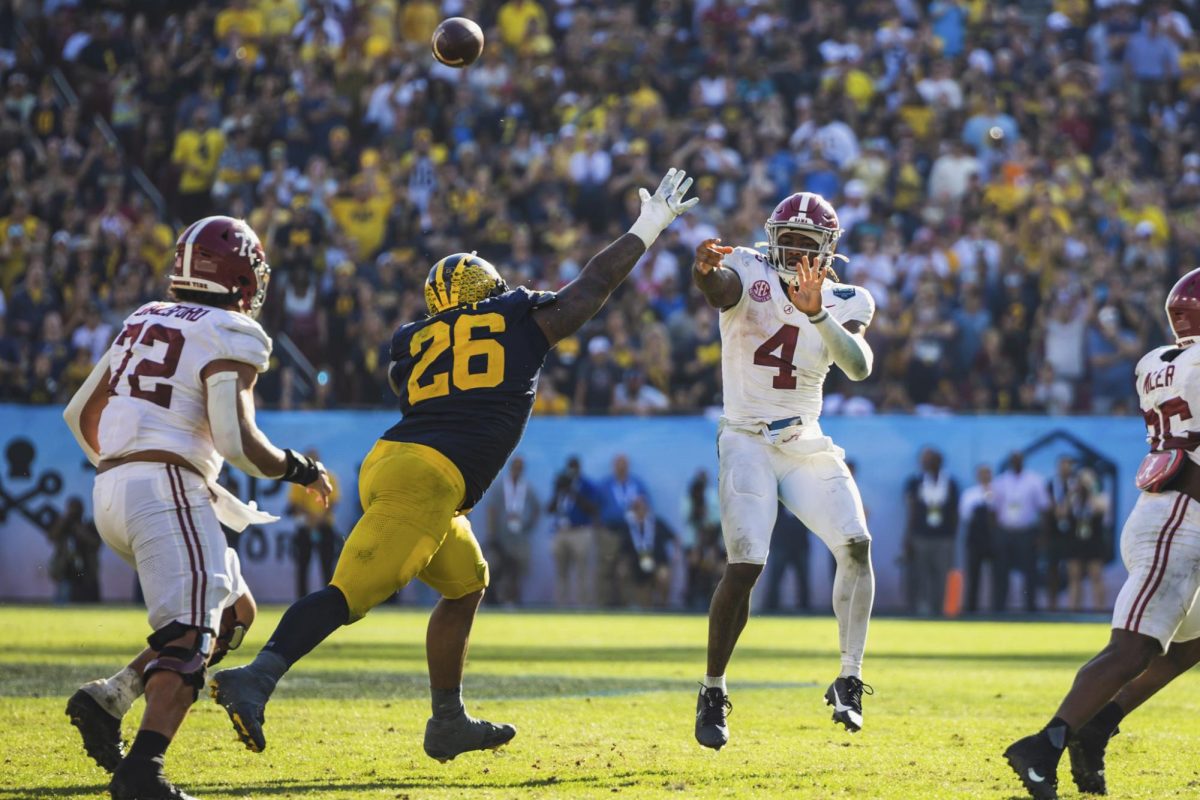The Crimson Tide secured a bounce-back win against Missouri after losing to Tennessee the week prior. Three key factors contributed to how Alabama got the win.
Spreading the ball out
Five different running backs recorded at least two carries during the game, contributing to the 271 total rushing yards. Last week, Alabama only gave carries to Jam Miller and Justice Haynes, who combined for 64 rushing yards.
Sophomore running back Richard Young broke off a 62-yard run with a little over three minutes left in the fourth quarter. Although the team let the clock run out at the end of the drive, the run energized the stadium late in the game and got Alabama off its 3-yard line.
Quarterback Jalen Milroe finished the game with 215 passing yards, despite making 19 fewer pass attempts than he had last week.
Six players recorded catches, with nobody being targeted more than eight times. Last week, Milroe targeted wide receiver Ryan Williams 20 times.
There is a noticeable difference when Milroe can effectively read the field and distribute the ball rather than throw over 40 passes and target the same receiver almost half the time.
“Every quarterback needs a good run game so the whole weight of everything isn’t on one guy’s shoulders,” head coach Kalen DeBoer said. “We have to continue to take the pressure off him to where every play isn’t on him, run or pass.”
When Alabama successfully starts the ground game with multiple running backs, and Milroe makes good reads, the results speak for themselves.
Limiting turnovers
Alabama had zero turnovers for the first time since Week 3 against Wisconsin.
Winning can be difficult when turnovers are an issue, as evidenced by the 11 turnovers committed by the Crimson Tide this season.
Compared to last week, Milroe showed improved vision of the field and made smart decisions on his pass attempts. Last week, he had three total turnovers, one of which was an interception in the end zone.
When the turnovers are limited, the offense can create scoring drives more often, especially when the defense can force turnovers, providing the offense with more scoring opportunities.
Alabama must ensure that communication between the offensive players can stay successful to avoid turning the ball over with a game in Death Valley versus LSU on the horizon.
“Being the No. 1 team in the country in communication is something [offensive coordinator Nick Sheridan] talked about with the quarterback position,” Milroe said. “Something that’s beneficial for this year is having the iPads on the sideline, having that aspect, but also just having our coaches push us throughout the game and just acknowledge where we can attack the defense.”
Penalties
The Crimson Tide still had some struggles, but nothing compared to the Tennessee game.
Alabama committed seven penalties, totaling 85 yards. Against Tennessee, Alabama had 15 penalties for 115 yards.
Penalty discipline is always something that a team can work on, as teams rarely ever escape with zero penalties. However, Alabama managed to cut the penalties in half.
The flags still hurt, but they didn’t limit the team quite like they did against Tennessee. When the Crimson Tide can manage to limit both penalties and turnovers, fans can expect to see success like they saw against Missouri.









